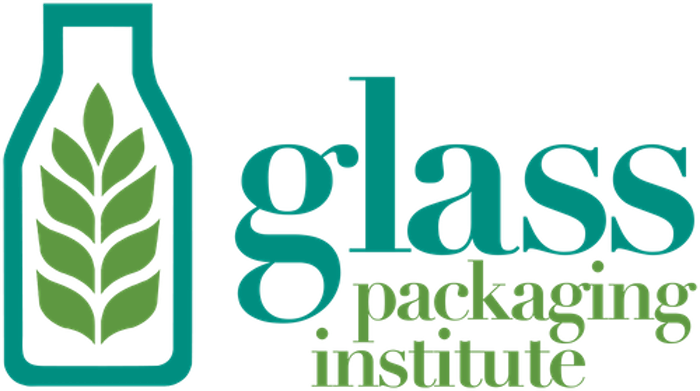Recycling glass is easy and makes it possible to make new glass bottles and jars in as little as 30 days. By saving on raw material, using less energy, and cutting CO2 emissions, recycling results in vast environmental pay offs.
Environmental Facts & Benefits
Glass can be recycled endlessly with no loss in quality or purity. In 2018, 31.3% of glass food and beverage packaging containers were recycled. In some states, like California, glass bottle recycling reaches over 80%.
Recycling glass containers promotes efficiency with significant environmental benefits that includes:
Saving on raw materials: over a ton of natural resources are conserved for every ton of glass recycled, including 1,300 pounds of sand, 410 pounds of soda ash, 380 pounds of limestone, and 160 pounds of feldspar.
Repurposing for production of new containers and fiberglass products. The container and fiberglass industries collectively purchase and remelt 3.2 million tons of recycled glass annually.
A decrease in energy use, with about 2-3% drop in cost for every 10% cullet used in the manufacturing process.
Greenhouse gas reduction in which a ton of carbon dioxide is reduced for every 6 tons of recycled container glass. A relative 10% increase in cullet reduces particulates by 8%, nitrogen oxide by 4%, and sulfur oxides by 10%.
Prolonging furnace life by including cullet in the manufacturing mix, making it less corrosive and lowering the melting temperature from 2800 degrees, F. to 2600 degrees F.
No processing by-products — Glass recycling is a closed-loop system, creating no additional waste or by-products.
Breaking Down the True Benefits of Cullet
If we examine cullet as part of the glass packaging process, it’s clear that it plays a crucial role. There are numerous advantages to cullet at every stage of the process from manufacturing and production down to recycling.
Traditional glassmaking relies heavily on three primary ingredients:
- Sand (primarily silica, SiO2)
- Sodium carbonate (commonly known as soda ash, Na2CO3)
- Limestone (CaCO3)
By introducing cullet manufacturers can reduce their raw material needs causing a significant advantage in terms of cost and resources.
One of cullet's most impressive attributes is its ability to lower energy requirements during production. For each 10% increase in cullet in the feed mixture, furnace energy needs drop by nearly 3%. This reduction not only cuts operational costs but also extends the lifespan of furnaces — a win-win for manufacturers and consumers alike.
Safety & Weight
Today’s glass containers are approximately 40% lighter than they were 30 years ago. Efforts to reduce the weight of glass containers continue throughout the industry.
Glass packaging can handle vacuum or high-pressure sealing, safeguarding against moisture and oxygen invasions. This protects food and beverages from spoilage and bacteria.
Glass containers are impermeable, air-tight, and transparent. You can see the freshness of food and beverages.
Nontoxic and FDA Approved.
Made from nontoxic raw materials—silica, sand, soda ash, limestone and up to 70% recycled glass—glass is the only packaging material certified by the U.S. Food & Drug Administration as “generally regarded as safe.”
Glass is nonporous and impermeable, so there are no interactions between glass packaging and products to affect the flavor of food and beverages. No nasty after taste—ever.
Glass has an almost zero rate of chemical interaction, ensuring that the products inside a glass bottle keep their strength, aroma, and flavor.
Glass can be specified to absorb damaging ultraviolet light, ensuring product purity and taste. In fact, glass has an inherently longer shelf life than any packaging material.
Glass does not deteriorate, corrode, stain or fade, so products inside a glass container remain as fresh as when they were bottled.
Understanding the Issues of Glass Recycling
While our ability to recycle glass and create a never-ending loop is a positive, there are some issues in the country with glass products and recyclable materials.
The dilemma starts with the adoption of “single-stream” recycling. In the United States, glass is typically recycled with other materials like plastic and cardboard. While it’s more convenient this way and likely results in more consumers recycling their goods – it creates a lot of comingling of materials.
This creates something called “wish-cycling” which occurs when people put items that they “believe” are recyclable but are not. Think grease-soaked pizza boxes, coffee pods, and glass covered in chemical waste that cannot be recycled.
The result? Only 40% of glass recycling is actually accepted at the material recovery facility.
The path to improving glass recycling in the US is multifaceted:
- Rethinking collection methods
- Investing in consumer education
- Developing regional cullet processing facilities
- Innovating in transportation and logistics
That said, we can all do our part to make glass bottle recycling more effective and this is a big part of what our goal is at the Glass Packaging Institute.
Become a member of GPI and gain all sorts of benefits while also promoting your organization's sustainability goals.

